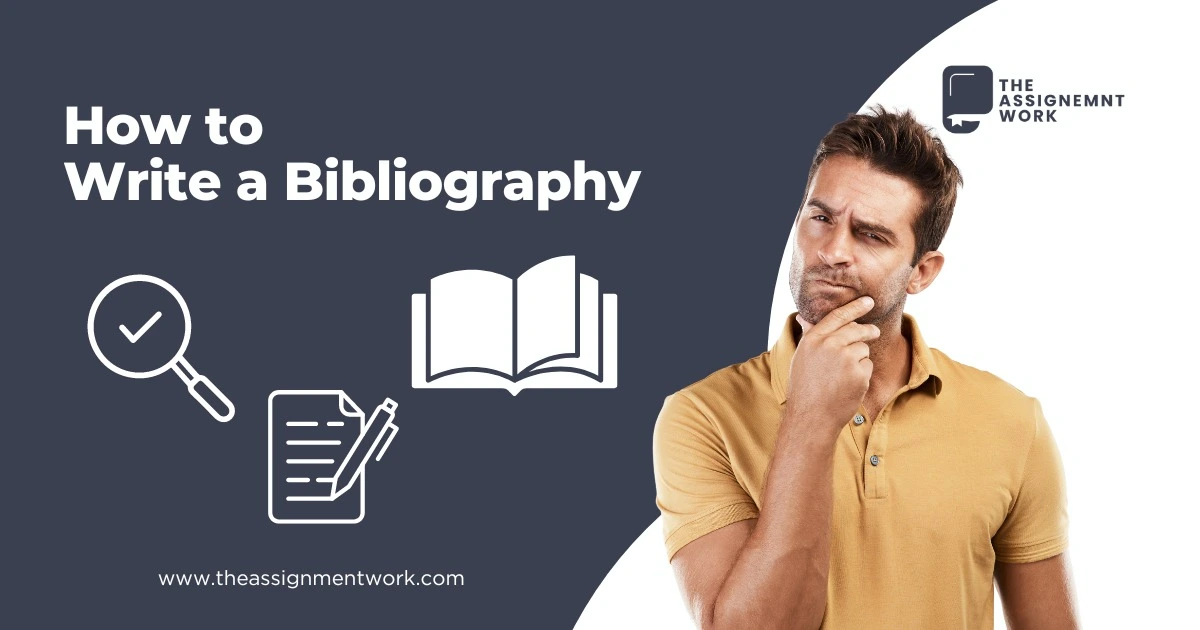Are you feeling overwhelmed by the task of creating a bibliography for your project? You’re not alone! Many students face the challenge of compiling a bibliography, but fear not – this blog is here to help. Writing a bibliography is an essential part of any project or research paper, but it doesn’t have to be intimidating.
In this guide, we’ll walk you through the process step by step, making it easy to understand and follow along. Whether you’re working on a school project, a Research Paper Writing Help, or any other assignment that requires citing sources, this blog has got you covered.
We’ll start by explaining what is bibliography is and how it differs from references and citations. Then, we’ll explore the different types of bibliographic styles, including APA, MLA, and Chicago, providing examples for each type. Next, we’ll break down the steps you need to follow to create your own bibliography, including what information to collect for printed sources, websites, and other electronic sources. By the end of this blog, you’ll feel confident in your ability to create a thorough and accurate bibliography for project. So let’s dive in and make how to write a bibliography a breeze!!
What is Bibliography?
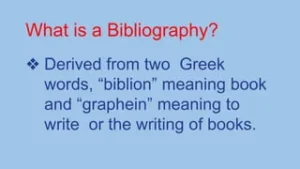
According to Cambridge, Bibliography is a list of the books and articles that have been used by someone when writing a particular book or article. In layman’s terms, a bibliography is basically a list of all the sources you’ve used in your project or paper. These sources could be anything from books to websites. Think of it like a map that helps your readers find their way through the maze of information you’ve used. It shows them where you got your ideas from and gives credit to the original authors. So, when you’re writing an essay or a research paper, your bibliography for project is like a signpost that guides people to the sources you’ve explored. It’s a crucial part of academic writing, making sure your work is reliable and transparent.
References vs Bibliography vs Works Cited
Before delving deeper, it’s essential to differentiate between these terms:
| Aspect |
Bibliography |
References |
Works Cited |
|---|---|---|---|
| Purpose | Lists all sources consulted and cited in a project or paper. | Lists all sources cited in the paper, arranged alphabetically or by citation. | Brief mentions of the source within the text, usually within parentheses. |
| Examples | Books, articles, websites, etc. | Books, journal articles, websites, etc. | (Author, Year) or (Author, Page Number) |
| Format | Comes at the end of the document. | May be included within or at the end of the paper. | Usually within the text or in footnotes or endnotes. |
| Content | Provides full details of each source, including author, title, publication date, publisher, etc. | Contains basic information about the source, such as author, title, publication, etc. | Contains brief details to identify the source, such as author’s name and year of publication. |
| Importance | Gives readers a comprehensive view of all sources used for research. | Helps readers find specific sources mentioned in the paper. | Allows readers to locate the full reference in the bibliography for project. |
Different Styles of Bibliographies (With Examples)
In many instances, writers rely on one of three primary style guides: APA (American Psychological Association), MLA (Modern Language Association), or The Chicago Manual of Style. While there are numerous other style guides available, these three are the most frequently utilized options by K–12 students.
Often, educators will specify their preference for a particular style guide. If not, you have the liberty to select your preferred style. Nonetheless, it’s essential to maintain consistency by employing the chosen guide throughout your entire paper, adhering to its recommendations for punctuation, grammar, and other stylistic aspects.
Below, we’ll explore how to compose a straightforward bibliography in research using each of the three major style guides. Instructions for citing books and e-books, periodicals, and electronic sources such as websites and videos are provided. If the type of reference material you need to include is not covered here, refer directly to the style guide you’re utilizing.
-
APA Style Bibliography:
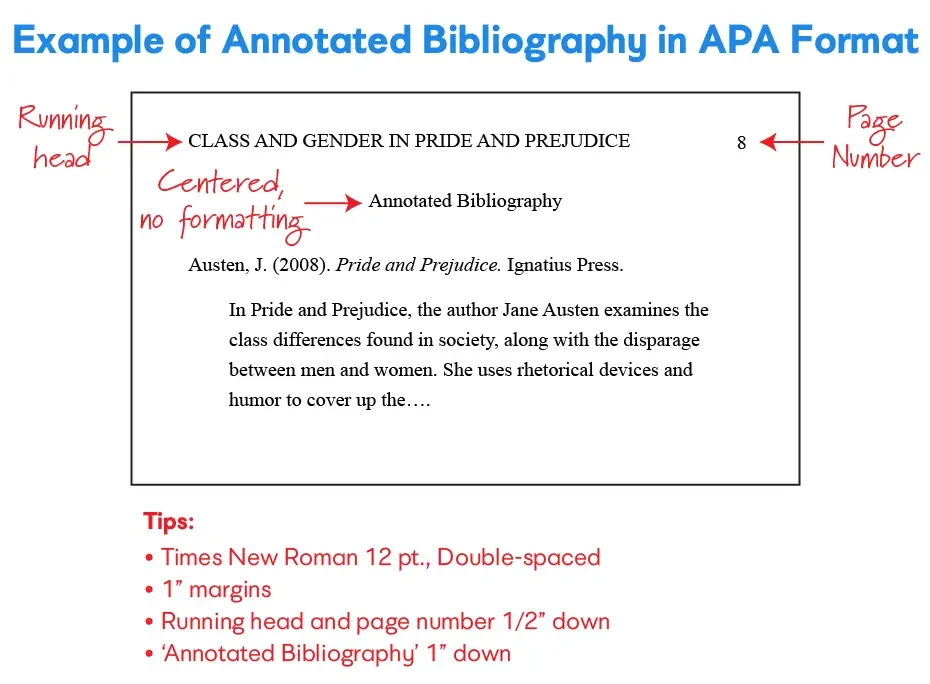
In the academic world, adhering to citation styles like APA is crucial for maintaining credibility and acknowledging the sources you’ve used. Let’s delve into how to construct a apa style annotated bibliography for project with clarity and precision.
- APA Annotated Bibliography Template Title and Formatting: Start your bibliography section with the title “References” centered at the top of the page. Your references should be left-aligned, not centered. If your entries span multiple lines, employ a hanging indent of 1/2 inch.
- APA Style Annotated Bibliography inclusion Guidelines:
- Include all types of resources in the same list, be it books, articles, or electronic sources.
- Alphabetize your list by the last name of the author or creator, with the last name coming first.
- Only use the author/creator’s initials, not their full first or middle names.
- If there are multiple authors or creators, use an ampersand (&) before the last one.
- Place the publication date in parentheses.
- Capitalize only the first word of titles unless it’s a proper noun or would otherwise be capitalized.
- Italicize titles of books, periodicals, or videos.
- For websites, ensure you include the full site information, including the http:// or https:// at the beginning.
- APA Bibliography Example:
- Books and E-Books: Format: Last Name, First Initial. Middle Initial. (Publication date). Title with only the first word capitalized. Publisher. Publisher’s website. Example: Wynn, S. (2020). City of London at War 1939–45. Pen & Sword Military. [Link to Publisher’s website]
- Periodicals (Journal/Magazine): Format: Last Name, First Initial. Middle Initial. (Publication date). Title of article. Magazine or Journal Title (Volume number)Issue number, page numbers. URL (if viewed online). Example: Bell, A. (2009). Landscapes of Fear: Wartime London, 1939–1945. Journal of British Studies (48)1, 153–175. [Link to URL]
- Electronic Sources: For articles with specific authors: Last Name, First Initial. Middle Initial. (Year, Month Date). Title. Site name. URL. Example: Wukovits, J. (2023, January 30). A World War II Survivor Recalls the London Blitz. British Heritage. [Link to URL]
- YouTube Videos: Format: Name of Account. (Upload year, month day). Title [Video]. YouTube. URL. Example: War Stories. (2023, January 15). How Did London Survive the Blitz during WW2? | Cities at War: London | War Stories [Video]. YouTube. [Link to URL]
-
MLA Style Bibliography:
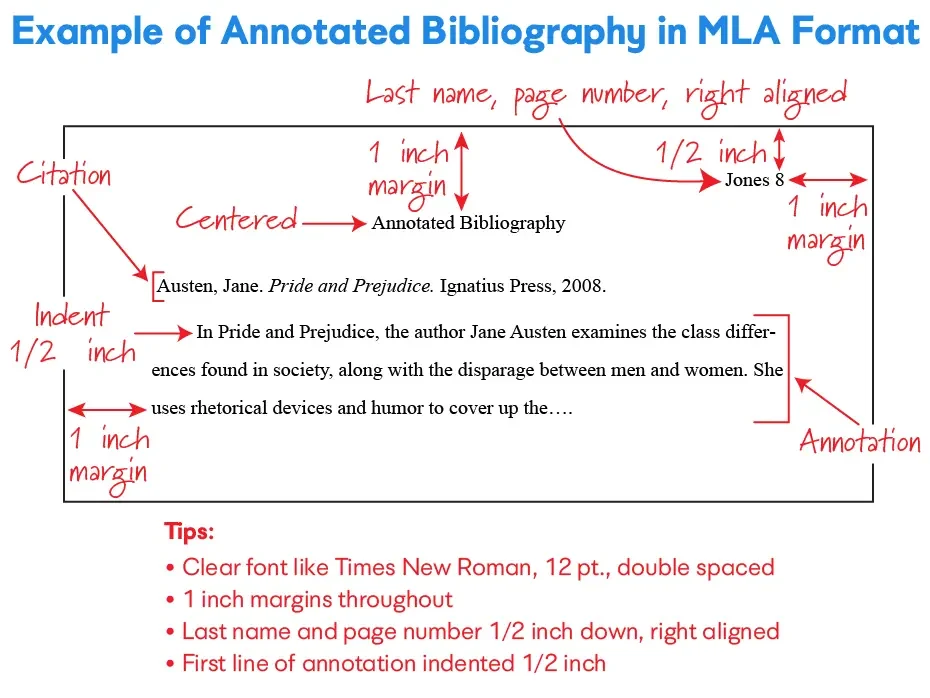
A MLA Style Bibliography is a comprehensive list of all sources cited in your work, including books, articles, websites, and other types of publications. It is typically included at the end of your paper, under the heading “Works Cited,” and follows specific formatting guidelines outlined by the MLA style. Here’s a detailed guide on how to understand and construct a mla style bibliography:
- MLA format and bibliography and MLA Annotated Bibliography Format : Start your bibliography for project section with the title “Works Cited,” centered at the top of the page. Ensure that your entries are left-aligned and use a hanging indent of 0.5 inches for subsequent lines.
- MLA Style Bibliography inclusion Guidelines: Include all types of sources you referenced in your work, arranged alphabetically by the last name of the author or creator. Provide full bibliographic details for each source, including author names, titles, publication dates, and other relevant information. Use proper MLA formatting for each type of source, including punctuation, capitalization, and italicization as required.
- MLA Annotated Bibliography Example :
- Books: Format: Last Name, First Name. Title of Book. Publisher, Publication Year.
- Periodicals (Journal/Magazine): Format: Last Name, First Name. “Title of Article.” Title of Periodical, vol. volume number, no. issue number, Publication Year, page numbers.
- Electronic Sources: Format: Last Name, First Name. “Title of Webpage or Article.” Title of Website, Publisher (if different from the website name), Publication Date, URL.
- YouTube Videos: Format: Username. “Title of Video.” YouTube, Upload Date, URL.
-
Chicago Style Annotated Bibliography:
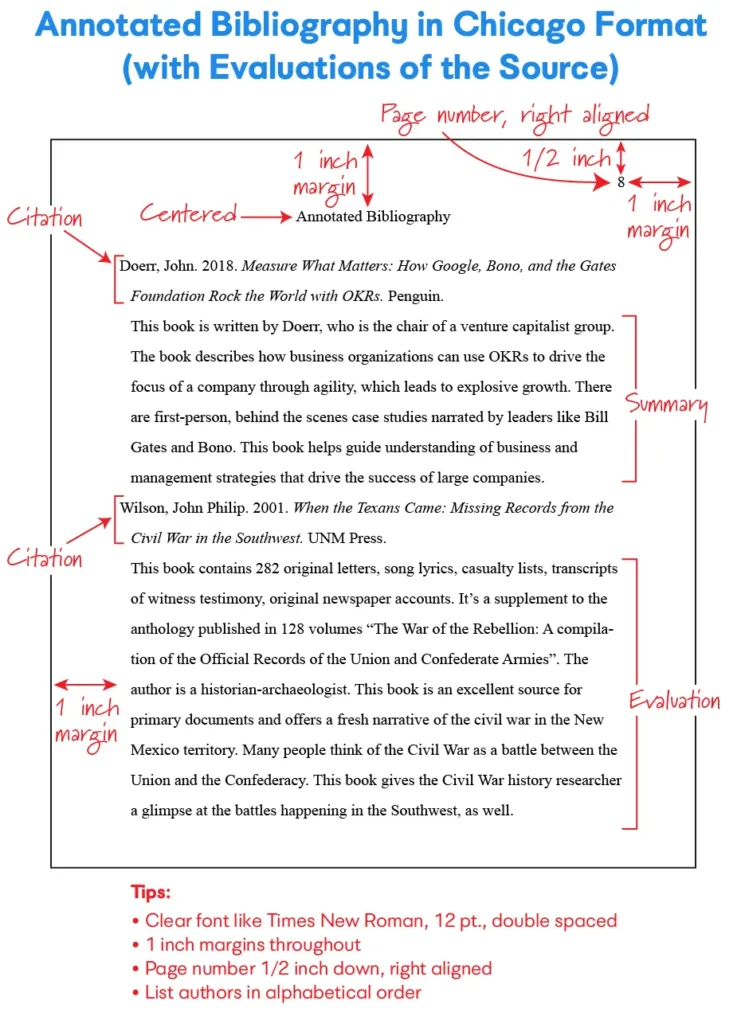
A Annotated Bibliography Chicago Style is a comprehensive list of all sources cited in your work, including books, articles, websites, and other types of publications. It is typically included at the end of your paper, under the heading “Bibliography,” and follows specific formatting guidelines outlined by The Chicago Manual of Style. Here’s a detailed guide on how to understand and construct a chicago style annotated bibliography:
- Title and chicago style bibliography format example: Start your bibliography section with the title “Bibliography,” centered at the top of the page. Ensure that your entries are left-aligned and use a hanging indent of 0.5 inches for subsequent lines.
- Chicago Style Annotated Bibliography Inclusion Guidelines: Include all types of sources you referenced in your work, arranged alphabetically by the last name of the author or creator. Provide full bibliographic details for each source, including author names, titles, publication dates, and other relevant information. Use proper Chicago Manual of Style formatting for each type of source, including punctuation, capitalization, and italicization as required.
- Chicago Style Annotated Bibliography Examples:
- Books: Format: Last Name, First Name. Title of Book. Place of Publication: Publisher, Publication Year.
- Periodicals (Journal/Magazine): Format: Last Name, First Name. “Title of Article.” Title of Periodical volume number, issue number (Publication Year): page numbers.
- Electronic Sources: Format: Last Name, First Name. “Title of Webpage or Article.” Title of Website. URL (Accessed Date).
- YouTube Videos: Format: Username. “Title of Video.” YouTube. URL (Accessed Date).
Steps to Create Your Bibliography:
Creating a bibliography for project involves several essential steps to ensure accuracy and completeness. Here’s a step-by-step guide:
- Collect Information:
- For Printed Sources: Gather details such as author(s), title, publisher, publication date, and page numbers.
- For Web Sources: Note down author(s), title of the webpage or article, website name, URL, and date accessed.
- For Electronic Sources: Follow the same criteria as web sources and include the DOI (Digital Object Identifier) if available.
- Organize Your Sources:
- Group your sources by type (books, articles, websites) to facilitate organization.
- Ensure consistency in formatting across all sources, maintaining uniformity throughout.
- Choose Citation Style:
- Select the appropriate citation style based on your instructor’s guidelines or publication requirements (APA, MLA, Chicago, etc.).
- Familiarize yourself with the specific rules and formatting guidelines of the chosen citation style.
- Format Your bibliography in research:
- Arrange your sources alphabetically by the author’s last name or title if no author is available.
- Apply consistent formatting, such as using italics for book titles and quotation marks for article titles.
- Ensure adherence to the guidelines of your chosen citation style for punctuation, capitalization, and other formatting conventions.
- Proofread and Revise:
- Double-check all details for accuracy, including spellings of author names and publication dates.
- Verify proper punctuation and formatting according to the selected citation style.
- Revise the bibliography for project thoroughly to eliminate any errors or inconsistencies.
Complete Checklist for a Perfect Bibliography
When you wonder how to write a bibliography, following checklist meets the highest standards,
- Organize sources alphabetically by the author’s last name or by the title.
- Maintain uniform formatting, including font style, size, indentation, and spacing.
- Ensure that each entry includes essential details such as the author’s full name, title of the work, publication date, and publication information.
- Adhere to the guidelines of your chosen citation style (APA, MLA, Chicago, etc.).
- Double-check the accuracy of all information, including spelling, dates, and publication details.
- Format citations correctly according to the specific rules of your chosen citation style.
- Verify the completeness of each citation, ensuring that all required elements are included.
- Cross-reference each citation with the original source material to confirm accuracy and completeness.
- Use hanging indentation for subsequent lines of each citation.
- Include URLs or DOIs for electronic sources, if applicable.
- Proofread the bibliography thoroughly to catch any errors or inconsistencies.
- Seek feedback from peers or instructors to ensure the bibliography meets academic standards.
- Make any necessary revisions or corrections based on feedback received.
- Double-check the bibliography for project against the assignment or project requirements to ensure all criteria are met.
- Finally, review the bibliography in research one last time before submission to ensure it is polished and error-free.
ALSO READ, Do’s and Don’ts of Writing a Research Paper
On an ending note,
Mastering the art of canadian assignment Help for bibliography creation is crucial for any project. A bibliography for project serves to acknowledge the sources that have contributed to your research, bolstering the credibility and integrity of your work. Understanding the various citation styles and adhering to their guidelines ensures accuracy and professionalism. By crafting thorough and well-organized bibliographies, you showcase your commitment to academic excellence and scholarly integrity. Embrace the entire process of how to write a bibliography, be it citing sources, as it plays a vital role in academic discourse and knowledge dissemination. Keep exploring and honing your skills in bibliography creation for future research endeavors.
Happy Citing!

